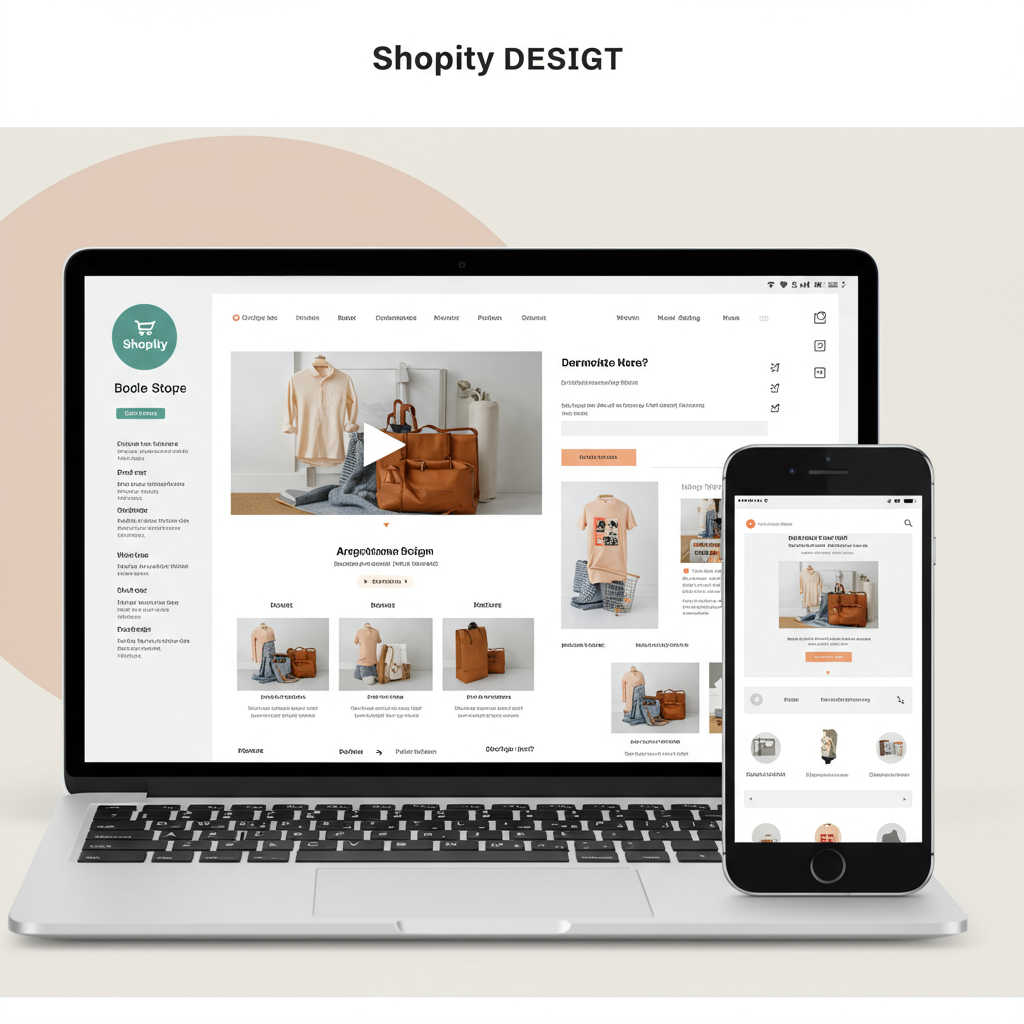Transforming your digital storefront into a conversion powerhouse for the coming year.
Hello fellow Shopify merchants! As we look ahead to 2025, the digital landscape continues to evolve at an incredible pace, presenting both challenges and exciting opportunities for our online stores.
Your Shopify store’s homepage isn’t just a digital storefront; it’s your brand’s first impression, your most powerful sales tool, and the gateway to your entire product catalog.
In this article, I want to share some crucial design tips that will help you optimize your homepage for success in the coming year, ensuring it stands out in a crowded market.
We’re not just talking about aesthetics here; we’re focusing on functionality, user experience, and conversion optimization – the core elements that drive sales.
The ultimate goal is to create a homepage that not only looks fantastic but also guides your visitors seamlessly towards making a purchase, fostering trust and engagement along the way.
First and foremost, let’s talk about the hero section. This is the very first thing your visitors see, and it needs to grab their attention instantly and communicate your value.
For 2025, consider dynamic, high-quality video backgrounds or interactive elements that showcase your products in action, telling a story rather than just displaying an image.
Your main headline should be clear, concise, and immediately communicate your unique selling proposition (USP). What problem do you solve? What makes you different from competitors?
Below the headline, a compelling call-to-action (CTA) button is essential. Make it stand out visually and use action-oriented language like ‘Shop Now,’ ‘Discover Our Collection,’ or ‘Explore Deals.’
Next, navigation. A cluttered or confusing navigation menu is a surefire way to lose potential customers before they even start browsing.
Ensure your main menu is intuitive, logically organized, and easily accessible, especially on mobile devices where screen real estate is limited.
Consider implementing mega-menus for larger product catalogs, but keep them clean, visually appealing, and easy to scan, avoiding information overload.
Mobile-first design isn’t just a trend; it’s a necessity. A significant portion of your traffic will come from smartphones and tablets, and this trend will only accelerate.
Your homepage must be fully responsive, loading quickly and looking perfect on any screen size. Test it rigorously on various devices and browsers to catch any glitches.
Personalization is going to be huge in 2025, driven by advancements in AI. Think about how you can dynamically display products or content based on a visitor’s browsing history, location, or previous purchases.
Shopify apps can help you implement this, offering tailored recommendations, recently viewed items, or personalized promotions right on your homepage, making the experience feel bespoke.
Social proof remains incredibly powerful. Integrate customer reviews, testimonials, or user-generated content prominently to build trust and credibility.
Showcase star ratings, snippets of positive feedback, or even a live feed of recent purchases (if appropriate for your brand and privacy policies).
High-quality product imagery and video are non-negotiable. Invest in professional photography and consider 3D models or augmented reality (AR) previews for key products.
These immersive experiences can significantly boost engagement, reduce returns by giving customers a better sense of the product, and set you apart from competitors.
Don’t forget about page speed. A slow-loading homepage frustrates visitors, leads to high bounce rates, and negatively impacts your search engine rankings.
Optimize your images for web, minimize unnecessary apps, and leverage Shopify’s built-in speed optimizations and content delivery networks (CDNs).
Clearly highlight your value propositions beyond just products. Do you offer free shipping? Easy returns? A unique warranty? Make these visible through trust badges or banners.
Integrate your blog or latest news section. This not only provides fresh content but also helps with SEO, drives organic traffic, and positions your brand as an authority in your niche.
Ensure easy access to customer support information – a clear link to your FAQ, contact page, or live chat. Trust is built on transparency and accessibility.
Consider incorporating elements that speak to sustainability or ethical practices if these are core to your brand values. Consumers are increasingly conscious of these factors and seek out brands that align with their values.
Showcase your best-selling products or new arrivals prominently. Use carousels or grid layouts that are easy to navigate and visually appealing.
Think about accessibility. Ensure your design is usable by everyone, including those with disabilities. This means proper color contrast, keyboard navigation, and alt text for images.
Finally, remember that your homepage is never truly ‘finished.’ It’s an ongoing process of optimization and refinement.
Regularly analyze your analytics, conduct A/B tests on different elements (like headlines or CTAs), and actively gather customer feedback to continually improve.
What do you think about these tips? Are there any strategies you’ve found particularly effective for your Shopify homepage that you’d like to share? I’d love to hear your thoughts!
By implementing these design tips, you’ll be well on your way to creating a Shopify homepage that not only attracts visitors but converts them into loyal, repeat customers in 2025 and beyond.






